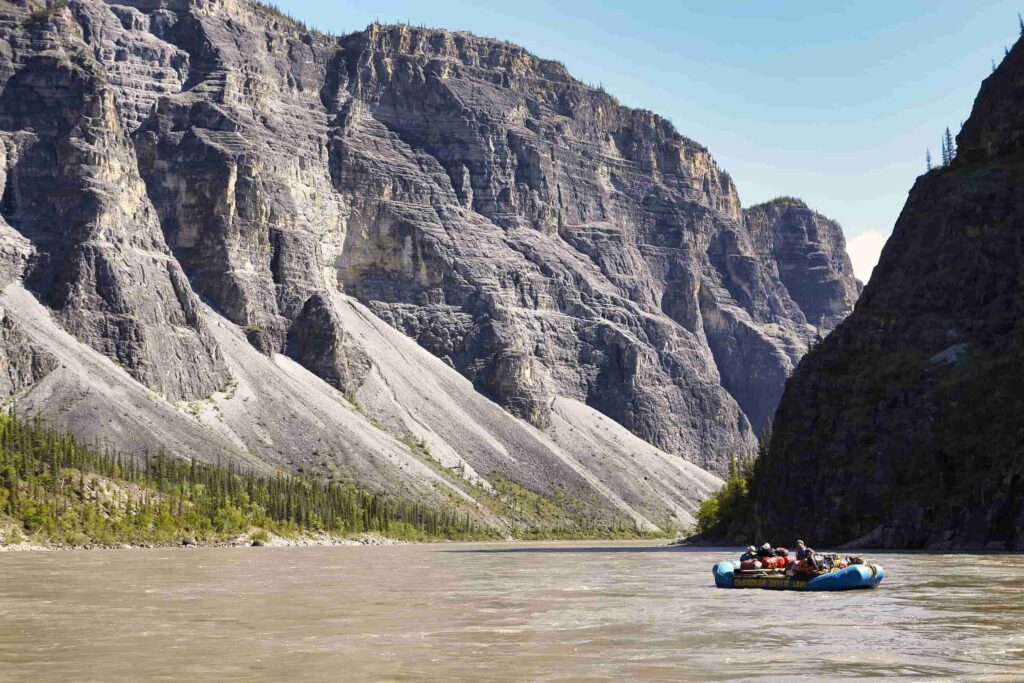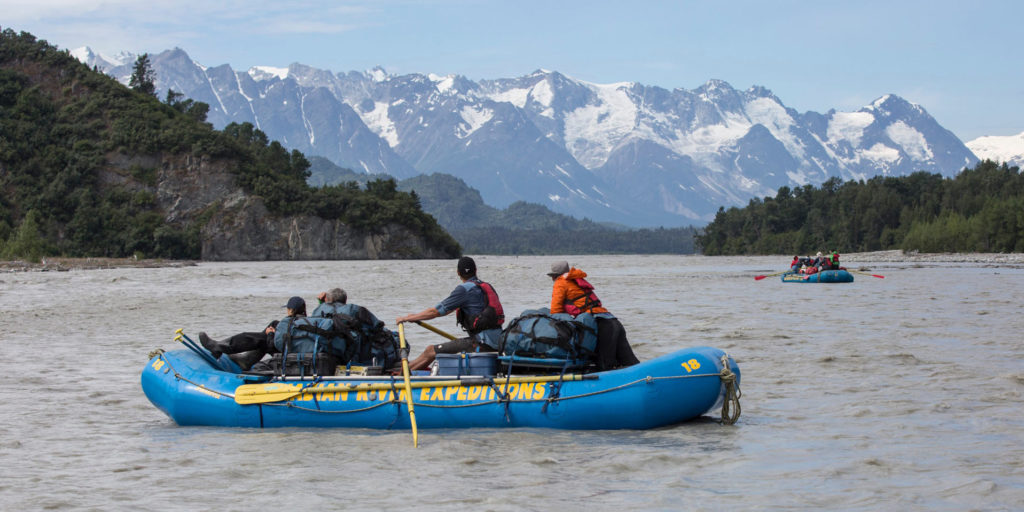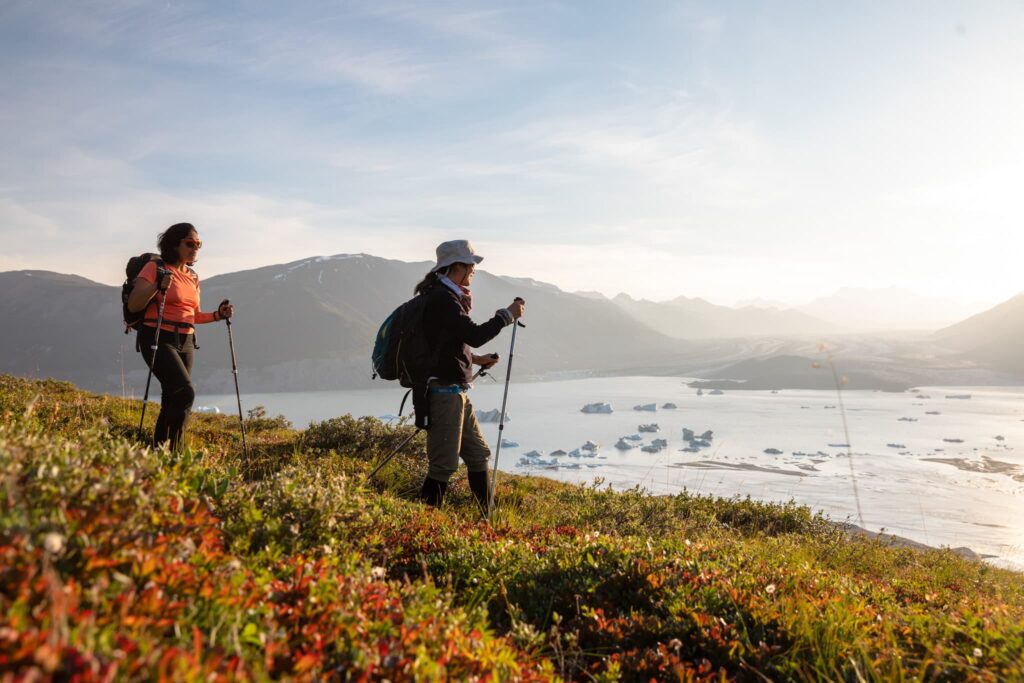Gazing upwards into the inky abyss that stretched out endlessly above me, a patchwork of stars slowly came into focus, each one flickering on like someone far, far away had flipped an old, faulty light switch.
As I marvelled at this timeless celestial mosaic, I suddenly noticed a faint, emerald ribbon subtly creep across the horizon.
They’re coming, someone beside me whispered.
The ribbon waxed and waned for a few minutes, seemingly unsure whether it wanted to make its presence fully known, before disappearing altogether.
Maybe tonight wasn’t the night after all.
I was about to give up hope altogether, when the sky exploded into colour. The heavens cleaved in half as the aurora borealis ripped across the sky, burning bolts of beryllium, violet and magenta cascading through the thermosphere.
The moment transcended time and place; nothing existed any more save for the resplendent spectacle illuminating the vast darkness above me. I silently let nature’s ancient rhythms sing their melody as they have done for eons.
Just as quickly as they had arrived, the aurora departed, vanishing gradually until the sky was an open, star-studded canvas once again. No trace remained of the breathtaking show that had just happened; it was a secret held by the shadows of the mountains rising out of the darkness enveloping us.
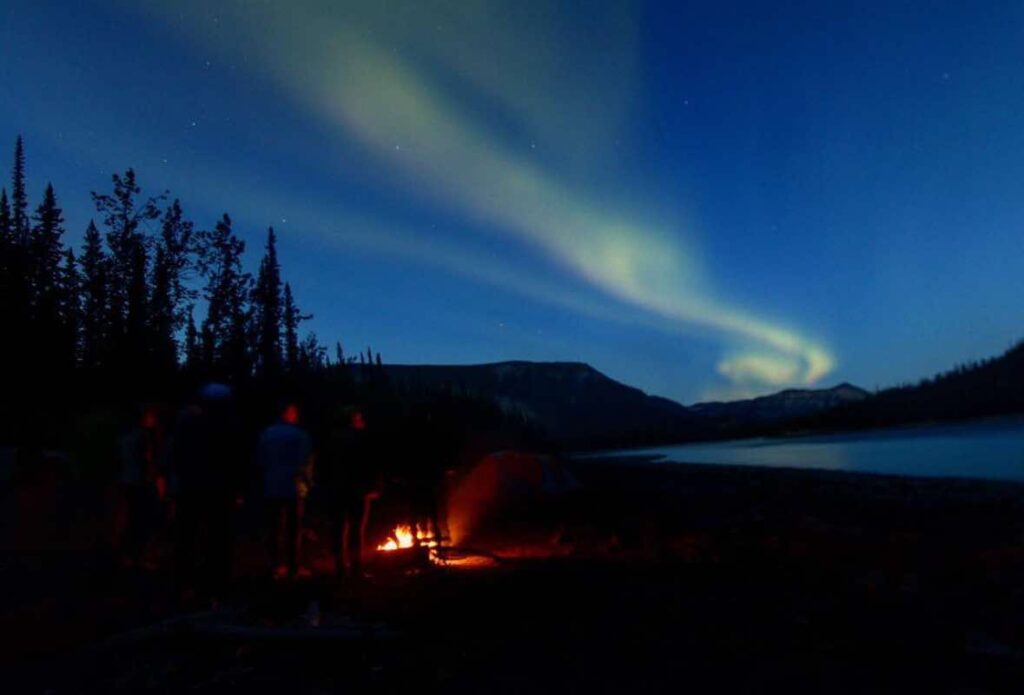
Northern Rivers: A Unique Aurora Experience
Though only minutes long, my first experience of the aurora borealis in the Yukon’s Kluane National Park made a deep impression on me. It highlighted the inextinguishable power of nature and the untold magic of these northern landscapes.
The promise of northern lights is a large reason why many of our guests join our river expeditions. Whether it is watching them dance over Canada’s deepest canyons on the Nahanni River, or illuminate the primeval glaciers and towering icebergs of the Tatshenshini and Alsek Rivers, the remote wilderness of the North offers an aurora viewing experience like no other.
Far from the lights and noise of civilization, the unpolluted night skies and peaceful settings offer unparalleled viewing opportunities for the northern lights. Our guides, many of whom have long standing or intergenerational personal connections to these landscapes, will enhance your experience by sharing stories and legends about this incredible natural phenomenon.
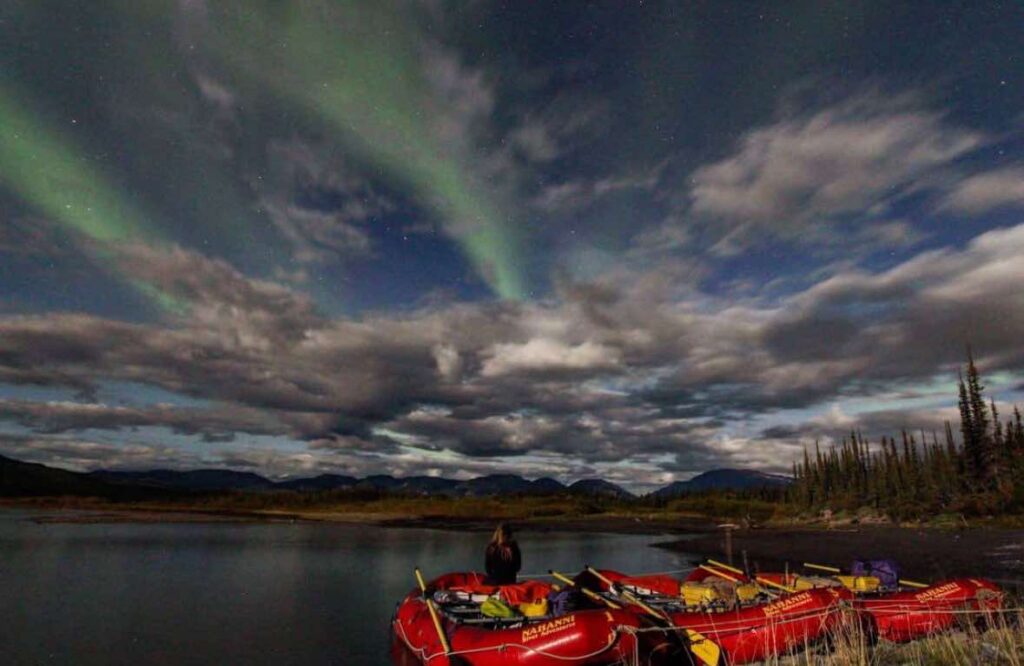
Dawn Winds: How the Aurora are Formed
Derived from the ancient Greek words for dawn, aurora, and wind, boreas, electrically charged particles released by solar storms on the surface of the Sun collide with atoms in the upper part of the Earth’s atmosphere, called the thermosphere. The collisions excite the atoms and create the light shows we see below.
The lowest part of the aurora may be as near to us as 80 miles above the Earth’s surface, whilst the upper reaches may extend several thousand miles above our planet.
The atoms of the two main gases in the Earth’s atmosphere, nitrogen and oxygen, create different colours. The more common greens seen in displays are caused by sun particles colliding with oxygen atoms, whilst pink, blue or purple hues are created by collisions with nitrogen atoms.
If the solar storm is particularly energetic, high altitude oxygen atoms can collide with solar particles to create a rare, vibrant scarlet colour.
Historical Interpretations
Cultures across the circumpolar North have documented the aurora borealis for millennia. The earliest known human documentation has been found in 30,000 year old cave paintings made by early European humans in present day France.
In traditional Sami culture, the northern lights are greatly respected; the name guovssahasat can be translated as “the lights that listen”, reflective of the fact that no noise can be made whilst the lights are out, in case you speak ill of them.
In northern Finland, folklore speaks of a fire fox running across the sky, whilst the Vikings believed the lights to be reflections of the gods. Indigenous cultures across Canada tell of hissing or crackling sounds created by the aurora, and how they are spiritual communications from above.
One thing in common is that the aurora borealis command a universal respect, a momentary pause to regard and listen to the natural world. Like the flow of a river, they exist within their own rhythms and have inspired artwork, music and poetry for generations.
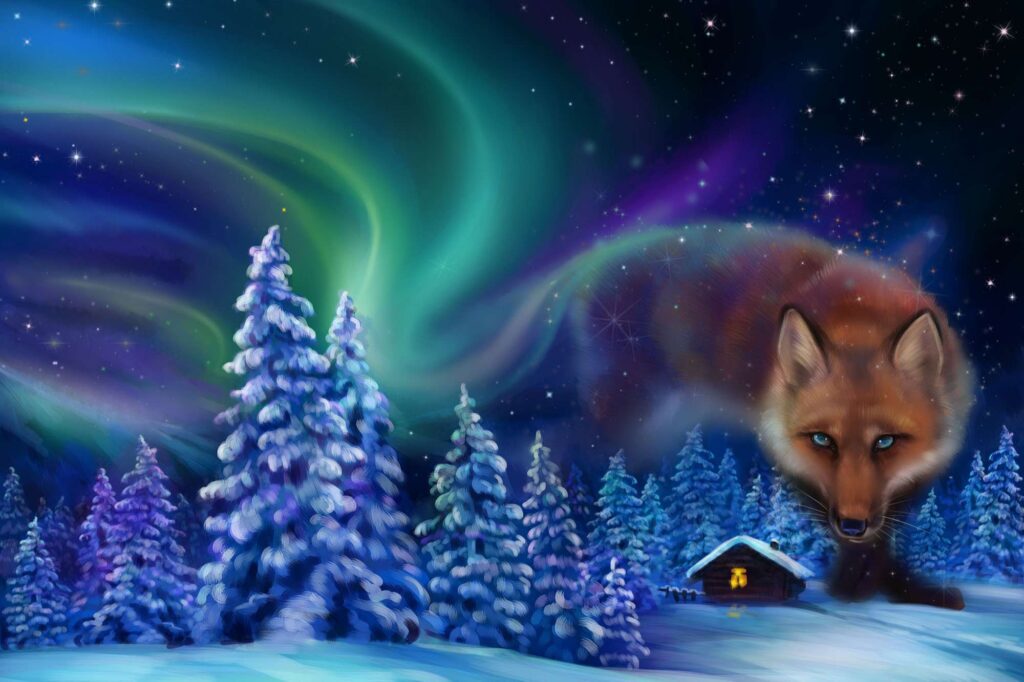
When & Where to See the Northern Lights
We are approaching the peak of our current solar cycle, periods which are 11 years in length. Experts say that the apex will be in 2026-27 – good news for aurora dreamers.
As the midnight sun finally sets in August, the North’s night skies darken once more and the aurora season begins. Mid to late August is one of the best times to see the northern lights within the summer months.
The Nahanni River is arguably the best location in the world to view the northern lights. The Northwest Territories are situated under the auroral oval – a belt around the Earth’s magnetic poles where solar particles are concentrated – and boast up to 240 nights of aurora action every year.
The Nahanni’s spectacular landscapes promise an unforgettable experience; watching the aurora dance over Canada’s deepest canyons is undeniably magical.
The Yukon also experiences breathtaking aurora shows. Our expeditions on rivers in the Peel watershed such as the Wind offer the chance to enjoy nature’s light show whilst surrounded by the awe-inspiring peaks of the Ogilvie Mountains.
Further west, autumnal colours are not the only hues to decorate the glacial landscapes on our Tatshenshini and Alsek river journeys. Past guests have witnessed the aurora dancing over iceberg-studded Alsek Lake – an indelible, icy experience!
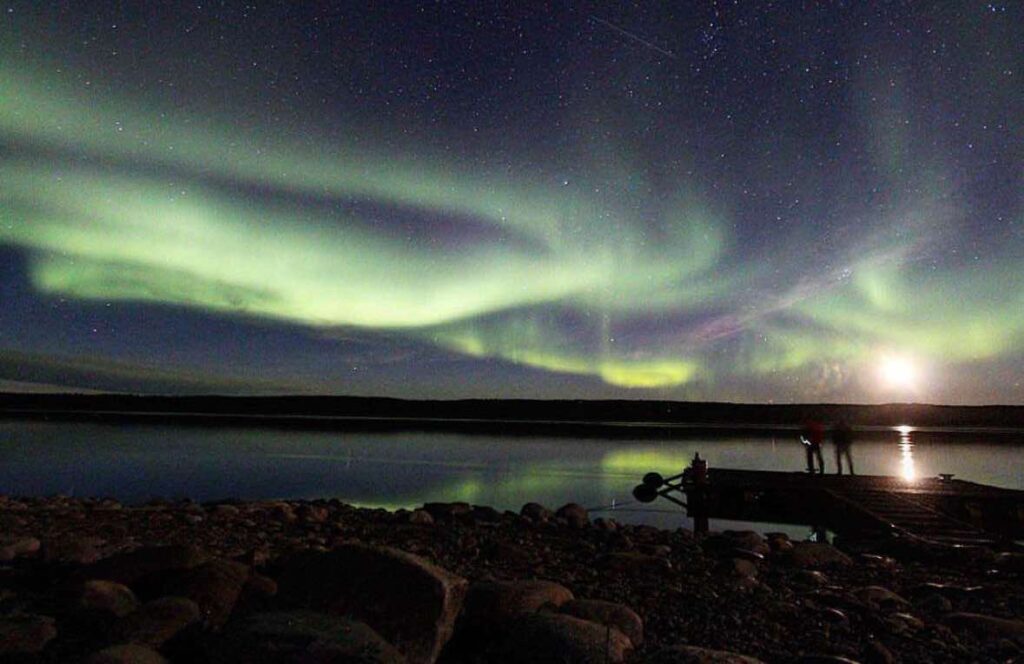
Tips for Photographing the Northern Lights
Our wilderness river expeditions are renowned for their world class photographic opportunities; photographers from across the world travel with us to capture the North’s incredible landscapes and wildlife.
The aurora borealis are a dream subject for many, though they don’t come without their own challenges. Space.com have a helpful guide to photographing the aurora.
One important thing to remember is to take your eyes away from the shutter and enjoy the show. Whilst some aurora displays can last for hours, others are only present for a few short minutes. A remote sensor can ensure you capture those long dreamed of shots, whilst imprinting your own memory with images to last a lifetime.
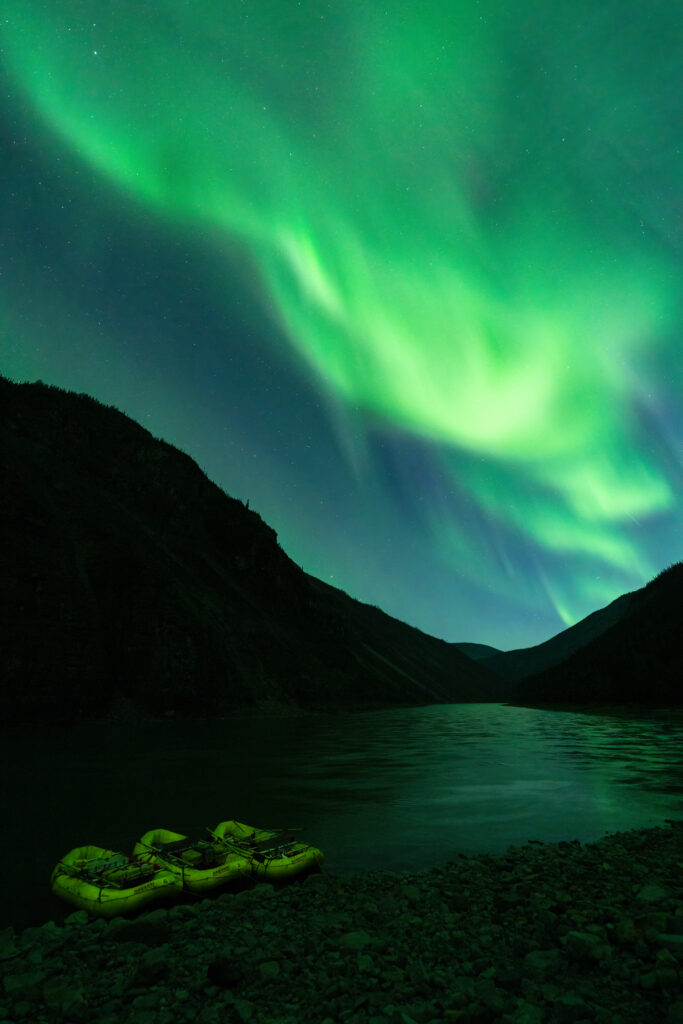
Ready to Experience the Magic of the Aurora?
Are you ready to witness one of the world’s greatest natural phenomena for yourself?
Perhaps watching the aurora dance over the Nahanni’s 1,500 metre high canyons, or reflect off iceberg-studded glacial lakes sounds like your dream adventure?
View our expeditions here or get in touch with our Expedition Planning Team to start planning your journey of a lifetime!


